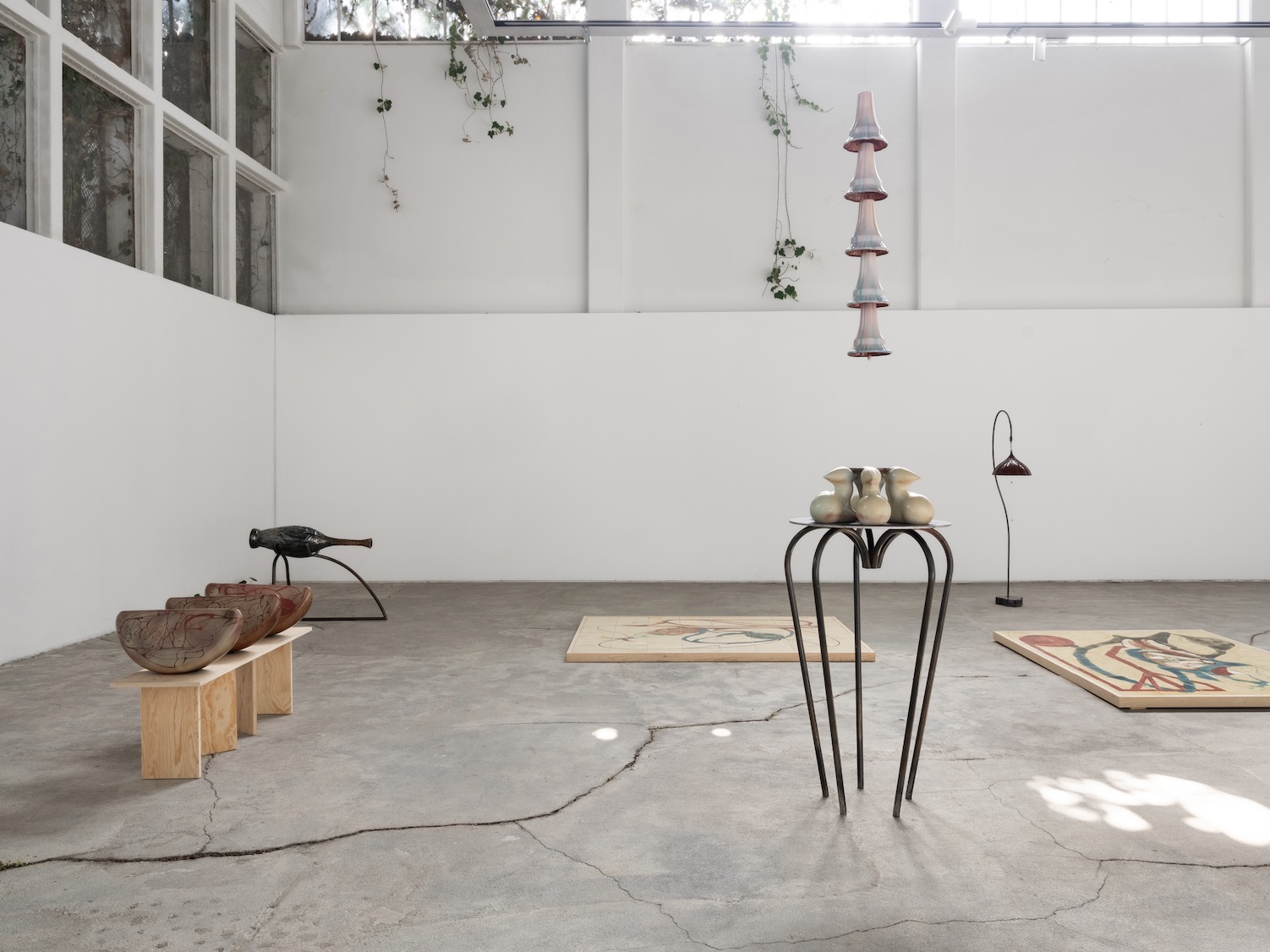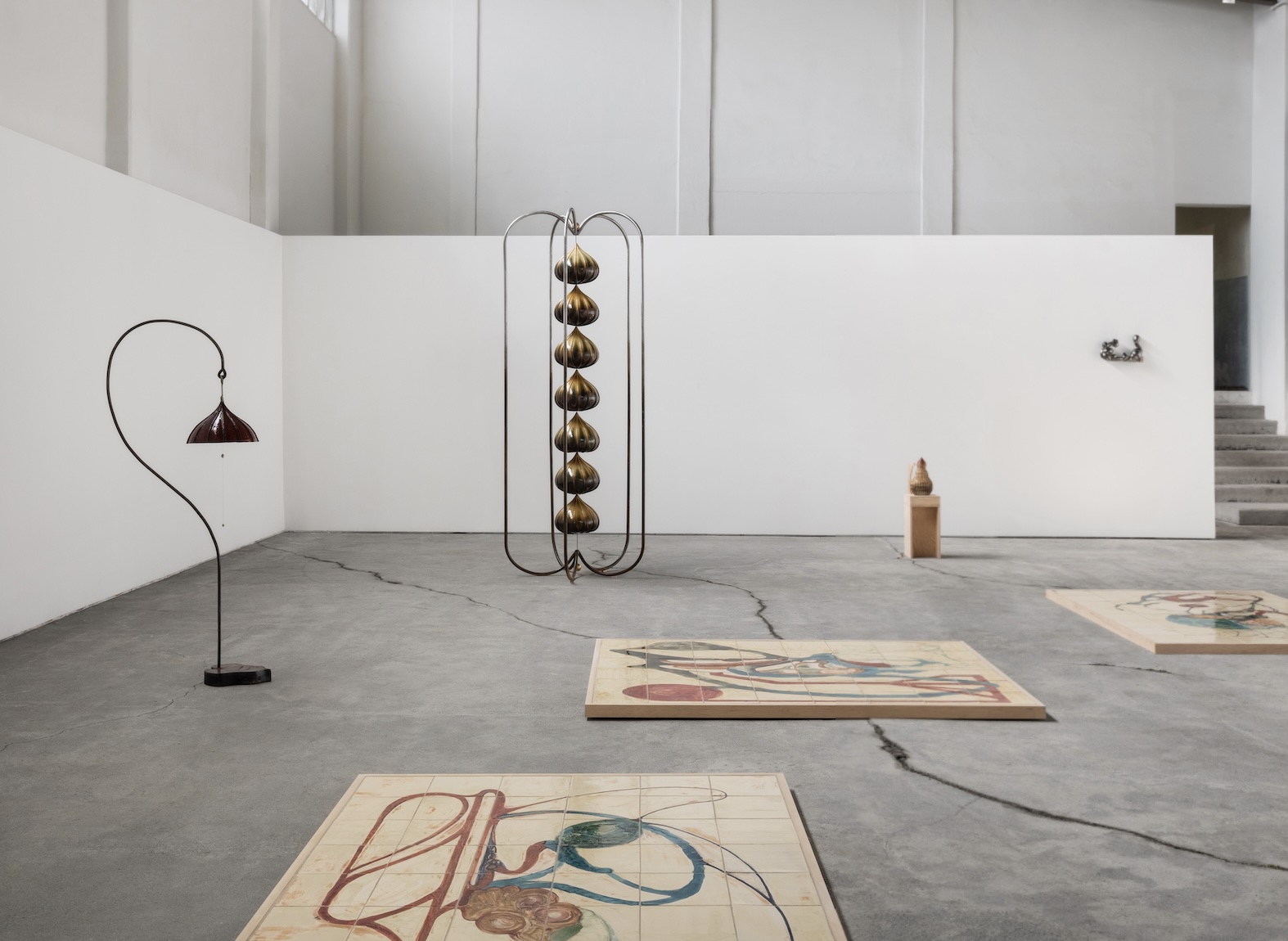
Review
Calyx Imaginalis: Vica Pacheco at Peana
by Verana Codina
Reading time
4 min
Place Where the Flower Breaks
This place is a secret garden: within it, creatures and objects patiently wait to be discovered. Amidst the silence, they seek to be activated, they want to make a sound. It is an enchanted garden where the inanimate comes to life with the slightest touch. It is also a garden for the senses; all five can be indulged. Its sensual forms invite, tempt, and desire. We can see them, hear them, smell them, touch them, and almost even taste them. It is an alchemical garden where every presence—animal, plant, or mineral—becomes an allegory of the transformation of matter to achieve a state of perfect harmony. Among fig trees and trumpet flowers, the garden of delights emerges.
Calyx Imaginalis is the first solo exhibition by Oaxacan artist Vica Pacheco (1993) at Peana. The show features a series of ceramic objects and paintings, the result of a residency at Cerámica Suro in Guadalajara.

Vica is a sculpting gardener; within the gallery, she has brought order to an artificial garden that stimulates the senses and enchants lovers. Each color, shape, and material is connected and corresponds with the others. Her work reflects an interdependence between form and content, with added functionality. Her enigmatic objects are sculpture-instruments endowed with the gift of music. When shaken or struck, the artist brings her creations to life, producing repetitive and organic sounds that mimic nature.

These sonic onomatopoeias correspond with the organic silhouettes that also echo the natural world. Like creatures from a bestiary or pre-Hispanic codices, these hybrids arise from the fusion of animal and plant forms, reproducing patterns found in nature. In Campana de floripondio y chupaflores (2024), a tessellation of trumpet flowers descends, almost reaching a row of beaks ready to pollinate them. Meanwhile, the central bowl and the metal structure holding it resemble a birdbath in a baroque garden.
In the case of Nectarios I, II, and III (2024), the tessellations are represented as continuous mosaic tiles mounted on the floor like planting boxes. From them, the harvest emerges. The enamel motifs on the ceramic evoke the “glyphs of Mexico City,” a collection of tile plaques showing the toponymy and meaning of the original names of different areas of the city.

Vica prepares the soil, readying the ground where she plants the seeds that will soon sprout from the permanent cracks in the floor of this exhibition space. These new shoots must be watered daily to continue growing alongside the veteran vines infiltrating from outside, hanging down from the gallery’s ceilings.
In Calyx Imaginalis, there is a mixture of materialities where all the elements exist in harmony. Air, water, earth, and fire become one with the ceramics. By transforming matter, Vica alchemizes the environment. Her objects, which combine pottery with metalwork, are rooted in art traditions such as Art Nouveau and Arts & Crafts, two movements that revived medieval crafts as an essential part of artistic production. Vica follows a similar path but locates it in Mexico, drawing on pre-Hispanic processes and technologies.

Pistilo (2024) is a sculpture that could easily be mistaken for a lamp from the architectural landmark Casa de los Lirios (1906). This elegantly shaped object is used as a bell in the artist’s performances. Furthermore, the design and creation of her sculpture-instruments follow the basic principle of ergonomics, promoting harmony between body, environment, and tool. Oruga coral (2021) is a wind instrument whose twisted spiral form recalls a mix of two Mexica symbols: ollin (movement) and ehécatl (wind). Its tentacle-like structure allows the hand to mold itself to the object when shaken.
When the dew descended yesterday,
amid future stamens and corollas,
I perished in a garden that presented
shadows in the shapes of trees, and water.
Fragment from Epitaph for an Aroma by Silvina Ocampo.
Translated to English by Luis Sokol
Published on October 22 2024